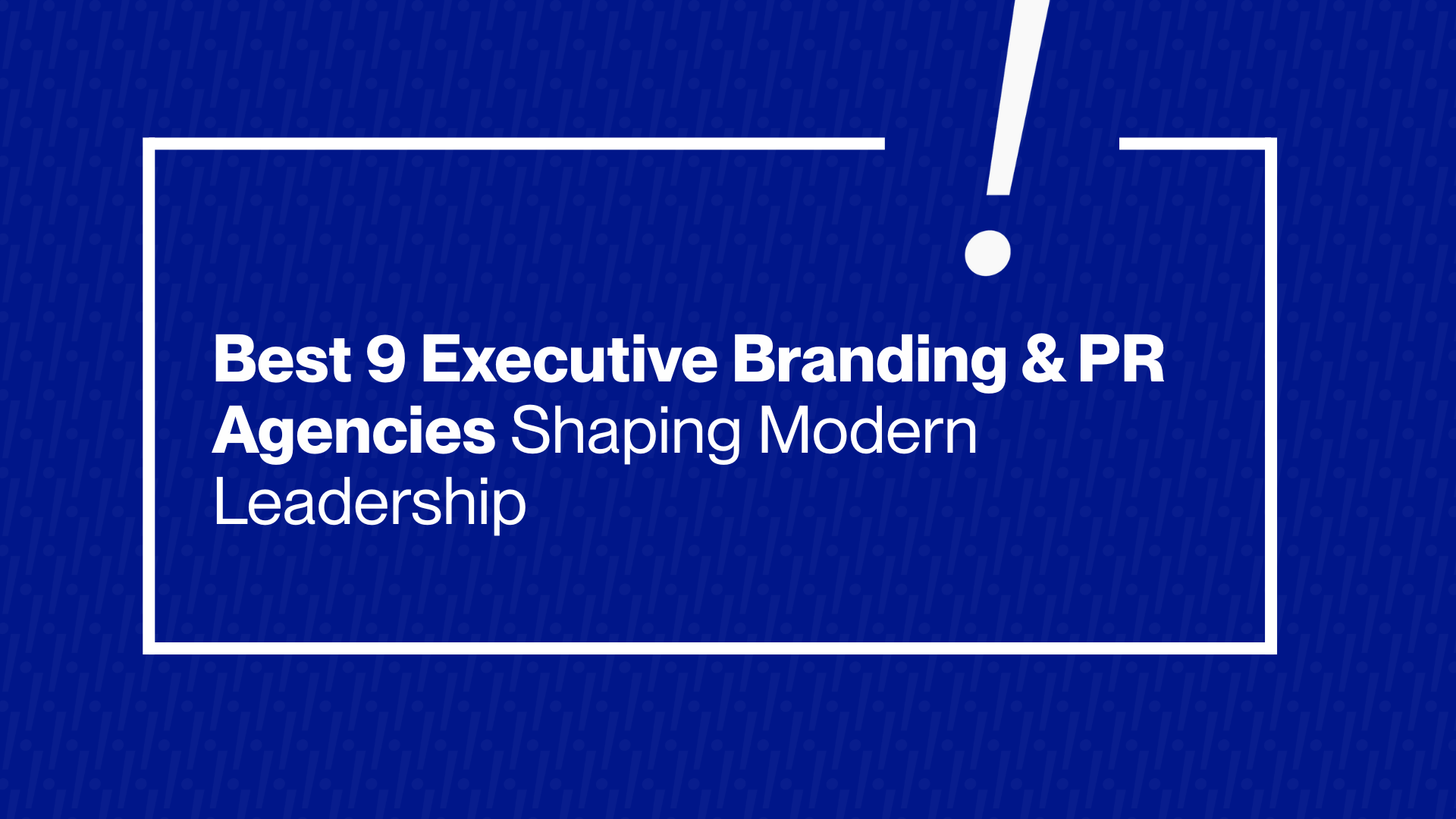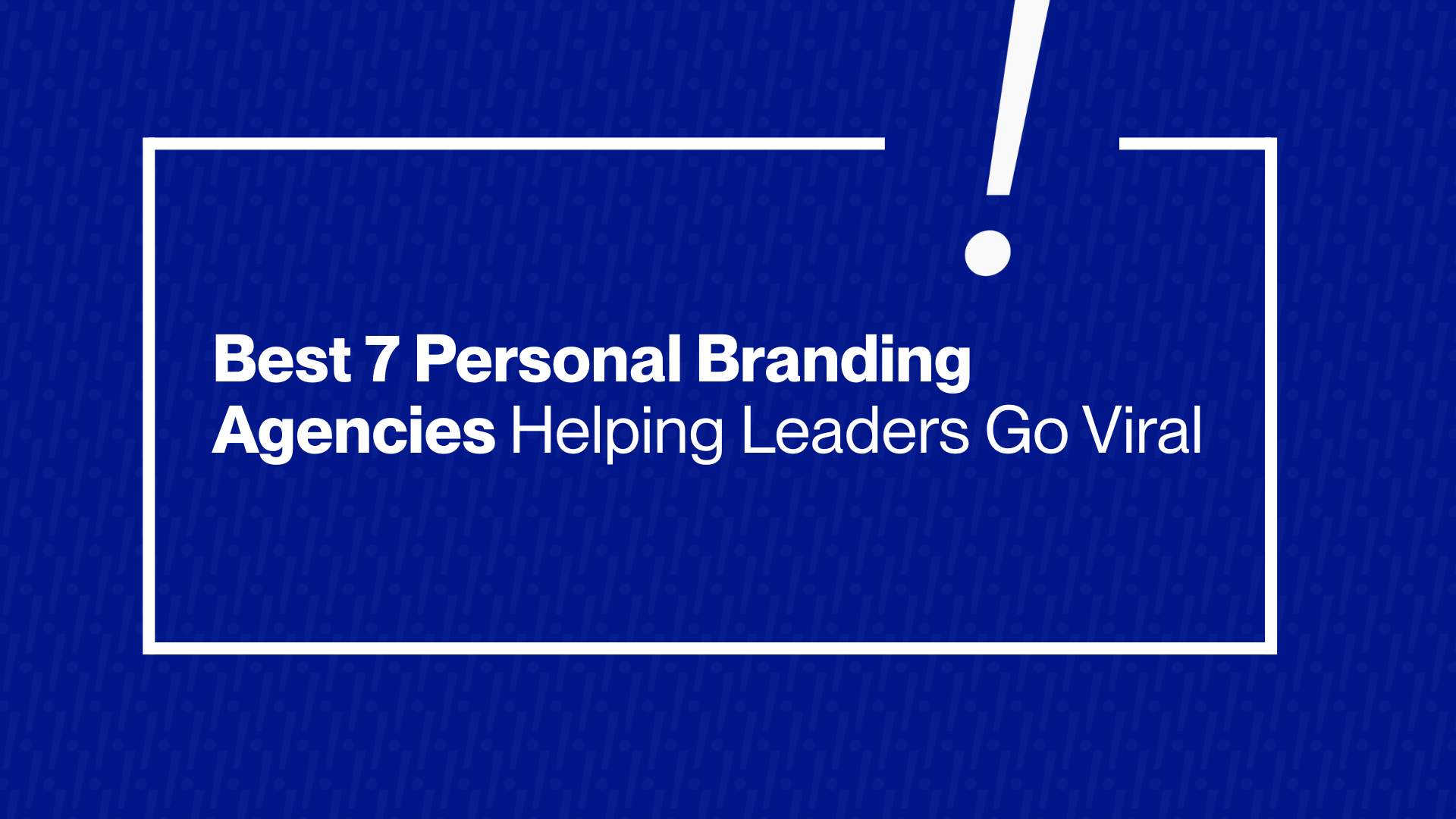In today’s connected world, an executive’s personal website isn’t optional; it’s essential. As one marketing guide notes, your online presence is often “the first impression you make” and the “heart of this brand.” A CEO or founder’s site should showcase expertise, vision, and accomplishments in one place. For example, a recent LinkedIn article explains that a CEO’s personal site is “an essential platform for building authority, controlling your personal brand, and connecting with stakeholders.” It lets you “position yourself as a thought leader” and “build credibility not just for yourself but also for your company.” In short, this site is your digital portfolio and resume, where you control the narrative. As TalentoHC points out, a strong personal site “provides deeper insights into who you are beyond what a LinkedIn profile can offer.” Done right, it cements your personal brand and opens doors to new opportunities.
Executives today know that social media comes and goes, but a personal site “is the lifeblood of [your] digital identity.” It’s your official online headquarters. Whether investors, media, or potential partners visit, they expect clear answers: Who is this leader? What do they do? How have they made an impact? Below, we break down the core elements visitors expect and how to structure your site to sell them.
What Visitors Expect
An executive’s website should answer visitors’ questions within seconds. Think of every visitor type (potential clients, investors, journalists, job seekers) and make their journey effortless.
Key expectations include:
- Clear Brand and Value Proposition: Visitors should immediately grasp who you are and what you offer. Use a headline or tagline on the homepage that highlights your role (e.g., “CEO of XYZ Corp.”) and value (“Scaling global fintech”, etc.). A concise personal brand statement or mission tagline can capture your unique value. For example, Alexa Curtis’s slogan, “I am a visionary designer who…”, distils her unique style and value.
- Professional Bio and Portfolio: Executives expect a strong About page or biography. Outline your journey, roles, and expertise in a storytelling format. Include major career milestones (company launches, M&A deals, IPOs) and highlight results. This is essentially your high-level “portfolio” of achievements. Even without creative projects, you can present a timeline or case studies of your leadership wins. Minhaz Uddin recommends a “compelling story” that outlines your journey, expertise, and vision.
- Press and Social Proof: Credibility is critical. Dedicate a section to media coverage and endorsements. Display logos of outlets that have featured you and quote any notable interviews. As one guide advises, highlighting media coverage “adds social proof” and even prompts interview requests. For example, Cameron Herold’s site uses a Forbes quote as a headline and features key media logos. Testimonials or short quotes from partners, clients, or other leaders can also build trust.
- Thought Leadership Content: Expect to provide resources that demonstrate your expertise. This could be a blog, articles, whitepapers, or videos. A well-organised content library gives visitors reasons to stay. Gary Vaynerchuk’s site, for instance, meticulously organizes his blog posts, videos, podcasts, and books so visitors can “easily discover content tailored to their interests.” High-quality content also helps SEO and positions you as a thought leader.
- Easy Navigation & Calls to Action: Visitors should never feel lost. Keep the menu simple (e.g., About, Media, Blog, Contact). Place clear calls to action where appropriate: “Book me for a talk,” “Join my newsletter,” or a contact form. For executives who speak or consult, a booking link is expected. Search Engine Land even emphasizes a simple “About” section that links to all your profiles; make it easy for people to find you across platforms.
- SEO and Technical Basics: Even as a personal brand, your site should be optimized. Use a domain that includes your name or brand (e.g., FirstLast.com) and repeat your name/title in page titles. Ensure fast load times, mobile-friendly design, and clear meta descriptions so that people find you when searching your name or expertise. In practice, that means: choose a clean domain (avoid “CEO-Name-123”), use alt text on images, and use keywords (like “entrepreneur,” “CEO,” “finance”) in headings and content. Remember: your site “belongs to you” even as social media rises and falls, so optimizing it ensures you control what people see.
Portfolio, Press, Positioning
A standout executive site is built around three pillars: your work, your credibility, and your message.
- Portfolio of Work/Achievements: Even if you’re not an artist, highlight your career portfolio. This could be a project summary, company list, or case study format showcasing what you’ve led. For example, a tech CEO might list products launched, companies acquired, or patents held. An investor might showcase portfolio companies. Use bullet lists, logos of companies, or short narratives on key successes. Complement these with metrics when possible (e.g., “Grew revenue 300% in 5 years” or “Raised $50M for X venture”).
- Media & Press: Create a dedicated Press page or section. Embed short clips of interviews, link to articles, and display media logos (Forbes, WSJ, TechCrunch, etc.). According to branding experts, featuring a media quote or logo on your homepage “builds credibility in a humble yet effective fashion.” For example, including a Forbes quote as a headline (as Cameron Herold does) immediately signals authority. Continuously update this with any new coverage.
- Positioning Statement: Define what sets you apart. Many leaders start with a bold mission or brand statement at the top of their site. TalentoHC recommends crafting a mission statement that “encapsulates who you are, what you do, and the impact you aim to make.” This might appear as a tagline under your name: e.g., “Educating the next generation of entrepreneurs,” or “Driving innovation in renewable energy.” The goal is a one-line summary of your unique value (your elevator pitch). As Shopify notes, a personal brand statement should distill your unique style and value proposition. Use this statement in headers or graphics so visitors instantly grasp your focus.
- Leadership Philosophy (Optional): Some executive sites include a short section on management or leadership style. It could be your guiding principles or a quote that reflects your values. This helps visitors (especially potential hires or partners) understand how you lead.
- Key Elements Checklist: Based on expert advice, ensure these core components are on your site:
- Professional Biography: A compelling narrative of your journey and vision.
- Media & Press: Links or clips of interviews, podcasts, news.
- Speaking/Events: (If relevant) Info on past or upcoming talks, with a booking form.
- Contact: A simple form or email link for opportunities.
Combining these elements ensures visitors see the full picture: who you are (bio), what you’ve done (portfolio), why you’re credible (press/testimonials), and what you believe or offer (positioning).
Examples from Our Favourite Founder Sites
To illustrate, here are a few standout personal sites from well-known leaders and what they do right:
- Gary Vaynerchuk: Gary’s site is a masterclass in content organization. It acts as a central hub for his many roles (entrepreneur, author, speaker). His blog posts, videos (including the #AskGaryVee series), podcasts, and book pages are all neatly organized so that “visitors can easily discover content tailored to their interests.” The design is bold and image-driven (with large photos of Gary), creating a strong visual brand connection. Importantly, the navigation clearly segments his brand: one menu for speaking, one for books, one for companies. Prominent calls to action (to subscribe, hire Gary, or join events) encourage engagement. The site is fully mobile optimized, ensuring accessibility on all devices. In short, Gary’s site shows how to turn a diverse career into a single cohesive ecosystem.
- Marie Forleo: Marie’s site strikes a warm yet professional tone. The clean, aspirational design (lots of pink and teal) immediately tells you she targets entrepreneurs. It serves as a hub for her programs and content: her flagship B-School course, her books, and her popular MarieTV videos are all front and center. There’s a friendly welcome message and a clear promise (e.g., “Helping you build a business and life you love”). Notably, Marie offers a ton of free content (blog posts, videos, tutorials), which “showcases her expertise and builds credibility.” A clear path then invites visitors to her paid courses. Testimonials from fans and graduates are integrated throughout, adding social proof. Overall, the site feels highly organized: it has strategic email opt-ins and showcases a clear business model, guiding users smoothly toward her services.
- Neil Patel: Neil’s personal site reflects his SEO expertise. It’s content-heavy, with a data-driven blog and a suite of free marketing tools (like Ubersuggest) that demonstrate his authority. Key features are prominent: free tools, blog articles, SEO insights, all designed to provide immediate value. The structure is exceptionally user-friendly: clear calls to action invite you to try tools or learn SEO, and the site supports multiple languages for global reach. According to the analysis, Patel’s site combines “comprehensive blog content, free tools and robust SEO optimization.” Everything is aimed at education and lead generation. Neil’s approach shows how a personal site can double as a powerful marketing and lead generation platform.
- Tim Ferriss: Tim’s site goes all in on content. Instead of flashy graphics, it’s a minimalist design with easy navigation through his vast library. It prominently features his podcast episodes, blog posts, and books. This “content first” strategy positions Tim as a curator of high-performance wisdom. Even the homepage simply invites you to jump into recent interviews or essays. By focusing on substance, the site keeps readers engaged and cements Ferriss’s image as a thought leader.
These examples share common lessons: they clearly communicate each founder’s niche, organize content for different visitors, and use their unique style. Notice how they all include lots of high-quality content (blogs, videos, tools) and strong calls to action (subscribe, contact, buy course). Study these layouts for inspiration, but remember to tailor your site to your own brand and goals.
Build a Site That Sells You
Now that you know what goes into a top-tier executive site, it’s time to build one! Here are some practical steps to create a personal website that sells you:
- Choose the Right Platform/Framework: Decide how you want to build the site. Many executives use user-friendly platforms like WordPress, Squarespace, or Webflow for quick setup and easy updates. If you have a developer’s help, modern frameworks like Next.js, Gatsby, or Hugo (static site generators) can give you lightning-fast performance and tight SEO. The platform you pick should match your tech comfort and needs. No matter what, ensure responsive design; the site must look great on phones and tablets.
- Design for Your Brand: Invest in a clean, professional look that aligns with your image. Consider hiring a designer or using a premium theme that conveys leadership; avoid generic or clip art styles. Use a consistent color scheme and typography on par with your corporate branding. Include a high-quality hero image or video on the homepage (for example, a portrait or a relevant background shot). Populate the site with professional photos of you (headshots, speaking at events, working with your team); this adds a personal touch.
- Craft Strong Content and Copy: Write your pages as if you’re talking to your target audience. Keep the tone authoritative yet approachable. On the homepage, introduce yourself in a way that highlights benefits for the reader. In the About section, tell your story and mission clearly. Use short paragraphs and bullet points where possible. Incorporate the keywords executives or journalists might search (e.g., “CEO of [Your Industry] Company,” “executive leader in [industry]”) naturally in your headings and text. Remember to optimize page titles and meta descriptions with your name and focus (for example: “Jane Doe – Tech CEO and Innovator | AI & Robotics Leader”).
- Optimize SEO and Site Settings: Your domain name should align with your brand. Ideally, use your name or a close variation (e.g., FirstLast.com or FirstLastCo.com), and keep it short without hyphens or numbers. Include your name and role in the homepage’s title tag and first header. Fill out every page’s meta description and image alt text thoughtfully. Link your social profiles and any affiliated companies (these links help search engines connect your brand). Since search traffic is key, don’t neglect technical SEO: ensure quick load times, secure SSL, and a mobile-friendly layout.
- Add Lead Magnets and CTAs: Even on a personal site, it’s okay to have calls to action. For example, invite visitors to join your newsletter for leadership tips, or download a free report you authored. These opt-ins help grow your audience. Make sure contact information is easy to find; consider a floating “Contact” button or footer section with email and social links.
- Maintain and Promote: Launch the site and share it widely: link it from your email signature and LinkedIn profile, and mention it in interviews or bios. Keep it updated; a stale site can hurt your credibility. If possible, publish new blog posts or news about you on a regular schedule. Even quarterly updates (new press mentions, awards, or blog content) keep the site fresh for visitors and search engines.
By thoughtfully combining these elements, you’ll have a site that truly sells you as an executive. It will look polished, reinforce your credibility, and make it easy for others to engage with you. Remember: your personal website is your digital business card and resume rolled into one. Make it count.
Building the right personal site takes effort, but it pays dividends. With clear messaging, strong visuals, and up-to-date SEO, your executive website will set you apart and attract the right opportunities. Get started today on building a site that showcases the best of you.
Bhavik Sarkhedi
Bhavik Sarkhedi is the founder of Write Right and Dad of Ad. Bhavik Sarkhedi is an accomplished independent writer, published author of 12 books, and storyteller known for his prolific contributions across various domains. His work has been featured in esteemed publications such as as The New York Times, Forbes, HuffPost, and Entrepreneur.
Related Posts

In today’s hyper-connected world, modern leadership branding is essential. Top executives can no longer remain “invisible behind corporate facades” their personal brand is a strategic business asset. Leadership branding means cultivating an executive’s identity and voice so stakeholders trust and follow that leader. In fact, studies show 82% of consumers trust a company more when […]

Growing a startup isn’t just about products and pitches today; the founder’s brand often matters just as much. Investors and customers alike now check a CEO’s profile online before deciding whom to trust. Studies show that 81% of investors have made decisions based on a company’s digital presence, and 82% of people trust a company […]

In today’s digital age, executive visibility functions like currency: leaders with strong personal brands earn credibility and influence. Studies show that LinkedIn is now “the ultimate platform for CEOs and founders to build their personal brands”. The very act of building an executive brand by sharing authentic stories and insights on social media especially on […]